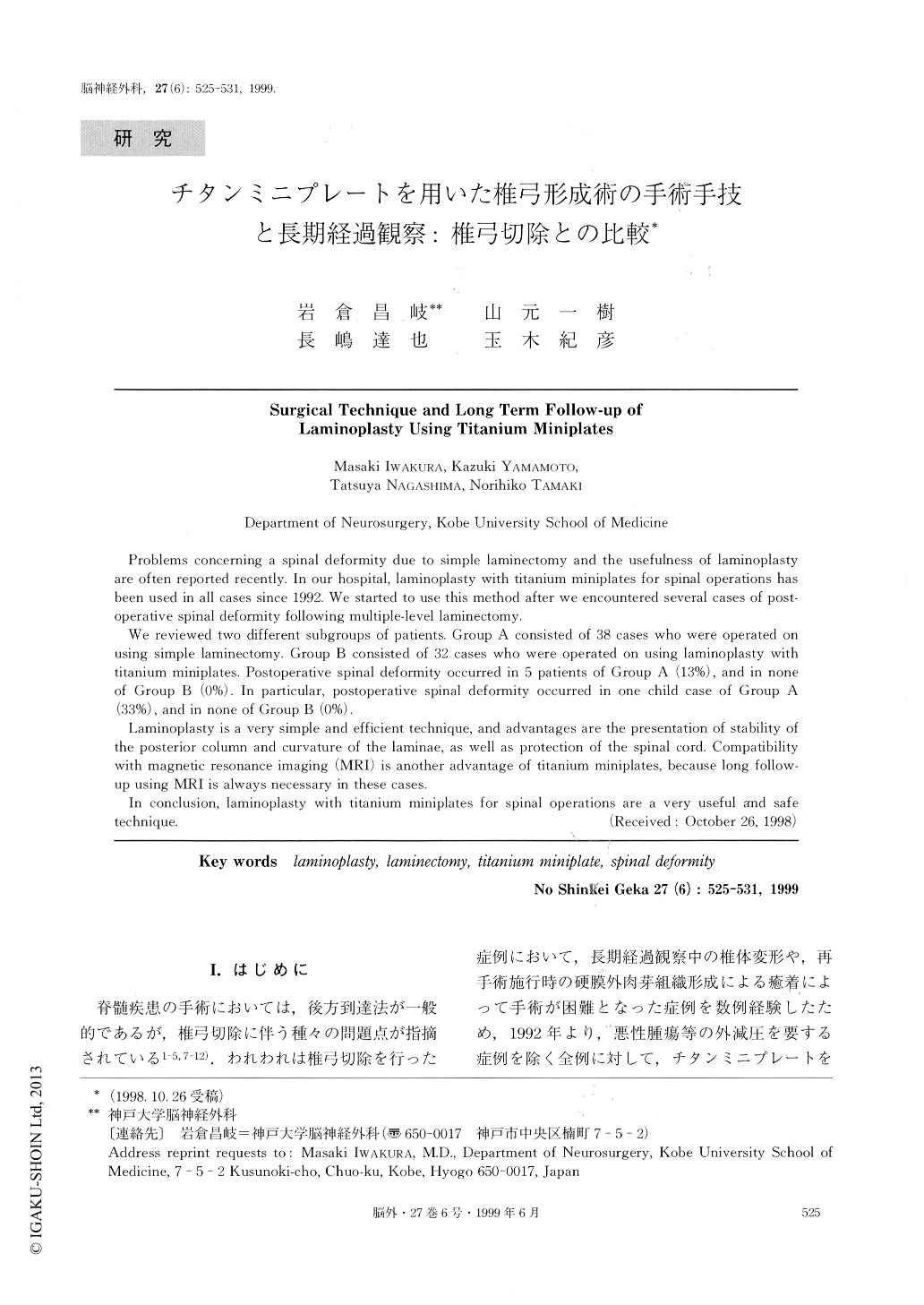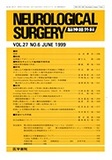Japanese
English
- 有料閲覧
- Abstract 文献概要
- 1ページ目 Look Inside
I.はじめに
脊髄疾患の手術においては,後方到達法が一般的であるが,椎弓切除に伴う種々の問題点が指摘されている1-5,7-12).われわれは椎弓切除を行った症例において,長期経過観察中の椎体変形や,再手術施行時の硬膜外肉芽組織形成による癒着によって手術が困難となった症例を数例経験したため,1992年より,悪性腫瘍等の外減圧を要する症例を除く全例に対して,チタンミニプレートを用いた椎弓形成術を施行し,術後の固定性と再手術時の容易さの点で良好な結果を得たので報告する.
Problems concerning a spinal deformity due to simple laminectomy and the usefulness of laminoplastyare often reported recently. In our hospital, laminoplasty with titanium miniplates for spinal operations hasbeen used in all cases since 1992. We started to use this method after we encountered several cases of post-operative spinal deformity following multiple-level laminectomy.
We reviewed two different subgroups of patients. Group A consisted of 38 cases who were operated onusing simple laminectomy. Group B consisted of 32 cases who were operated on using laminoplasty withtitanium miniplates. Postoperative spinal deformity occurred in 5 patients of Group A (13%), and in noneof Group B (0%). In particular, postoperative spinal deformity occurred in one child case of Group A(33%), and in none of Group B (0%).
Laminoplasty is a very simple and efficient technique, and advantages are the presentation of stability ofthe posterior column and curvature of the laminae, as well as protection of the spinal cord. Compatibilitywith magnetic resonance imaging (MRI) is another advantage of titanium miniplates, because long follow-up using MRI is always necessary in these cases.
In conclusion, laminoplasty with titanium miniplates for spinal operations are a very useful and safetechnique.

Copyright © 1999, Igaku-Shoin Ltd. All rights reserved.


